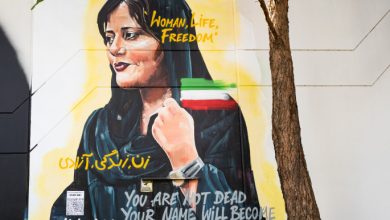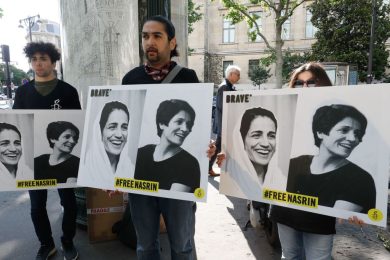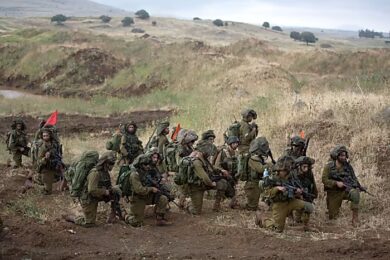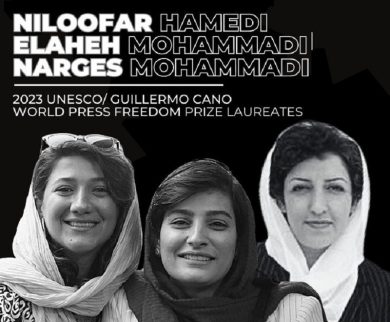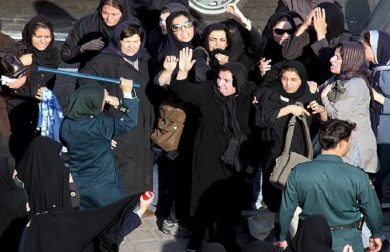The Islamic Revolutionary Guard Corps (IRGC) does not only wield power through military might and economic control; it also exerts significant influence through a sophisticated propaganda machine. This system, operating through state media, social media campaigns, and cyber operations, aims to manipulate public perception, both domestically and internationally. The IRGC uses disinformation, censorship, and intimidation to maintain the regime’s grip on power and discredit opposition movements. This article analyzes the strategies behind the IRGC’s propaganda efforts, their impact on public discourse, and the global response to countering these tactics.
1. The IRGC’s Control of Iranian Media
The IRGC directly controls or influences Iran’s major media outlets, shaping news coverage to serve the regime’s interests. Through state-run channels, newspapers, and online platforms, the IRGC disseminates propaganda designed to suppress dissent and promote the regime’s narrative.
A. State-Controlled Media
• Outlets like IRIB (Islamic Republic of Iran Broadcasting) provide heavily biased news, portraying government critics as traitors or foreign agents.
• Coverage of protests often emphasizes violence and security threats rather than the protesters’ demands for justice and freedom.
B. Censorship and Information Control
• The regime enforces strict censorship laws, blocking access to independent media and international news websites.
• The IRGC’s cyber units monitor and suppress online dissent, arresting journalists and activists who challenge the official narrative.
2. The Role of Disinformation in Shaping Perception
The IRGC employs disinformation tactics to distort facts and manipulate both domestic and international audiences. These tactics include spreading false narratives, framing events, and blaming external forces for internal unrest.
A. False Narratives
• The regime frequently claims that protests are orchestrated by foreign governments, particularly the United States, Israel, and European nations.
• Disinformation campaigns depict activists and journalists as puppets of foreign intelligence agencies, discrediting legitimate demands for reform.
B. Framing Protests as Security Threats
• The IRGC portrays protests as threats to national security, justifying violent crackdowns in the name of stability and law enforcement.
• Propaganda often emphasizes isolated acts of vandalism or violence to delegitimize the broader movement.
C. Disinformation Targeting Ethnic and Religious Minorities
• The IRGC’s propaganda fuels sectarian divisions, portraying ethnic minorities such as Kurds, Baloch, and Arabs as separatists or extremists.
• This tactic aims to divide the population and weaken solidarity among different activist groups.
3. Cyber Propaganda and Social Media Manipulation
In addition to traditional media, the IRGC has expanded its propaganda efforts to social media platforms, using fake accounts and troll farms to control online narratives.
A. Fake Accounts and Online Harassment
• The IRGC deploys troll armies to flood social media with pro-regime messages, while harassing and intimidating activists and journalists.
• Fake accounts spread disinformation, amplifying state narratives and drowning out independent voices.
B. Misinformation Campaigns During Protests
• During protests, the IRGC uses misleading videos, edited footage, and fabricated stories to confuse the public and undermine trust in activist movements.
• These tactics aim to divide the opposition by promoting false narratives about violence, foreign interference, or internal disputes among protesters.
4. The Global Impact of IRGC Propaganda
The IRGC’s propaganda efforts are not limited to Iran. They also seek to influence international public opinion and foreign policy decisions.
A. Portraying Iran as a Victim
• The regime often presents itself as a victim of unjust sanctions, foreign aggression, and Western imperialism.
• This narrative is designed to garner sympathy from international audiences and neutral governments.
B. Countering International Criticism
• Iranian officials frequently accuse human rights organizations and foreign media of spreading fake news and anti-Iran propaganda.
• The IRGC funds pro-regime media outlets abroad to promote alternative narratives that downplay human rights abuses.
5. Countering the IRGC’s Propaganda Machine
Efforts to combat the IRGC’s disinformation campaigns require global cooperation and support for independent media.
A. Supporting Independent Journalism
• Independent Persian-language media, such as BBC Persian and Iran International, play a crucial role in exposing the regime’s propaganda.
• These outlets provide uncensored news and amplify the voices of Iranian activists and protesters.
B. Promoting Digital Security
• Activists and journalists need access to secure communication tools to evade surveillance and protect their identities.
• Organizations like Access Now and Reporters Without Borders offer digital security training and VPN services to help activists bypass censorship.
C. Fact-Checking and Disinformation Awareness
• Fact-checking initiatives can help counter misleading narratives by providing accurate information and debunking false claims.
• Raising media literacy among the public is essential to reduce the impact of propaganda and disinformation.
6. Stories of Resilience
Despite the IRGC’s propaganda efforts, many Iranian activists and journalists continue to resist by exposing the truth.
A. The Underground Reporter
• Sara, a citizen journalist, secretly films protests and shares footage with international media. “The truth is our weapon,” she says, despite the risks of arrest.
B. The Digital Activist
• Ali, a digital security expert, trains activists to protect themselves from cyberattacks. “The regime fears our ability to communicate. We must stay one step ahead.”
7. The Role of Global Solidarity
International solidarity is crucial in countering the IRGC’s propaganda machine.
A. Expanding Sanctions on Propaganda Networks
• Governments should target IRGC-affiliated media outlets and cyber units involved in disinformation campaigns.
B. Amplifying Activist Voices
• Human rights organizations and diaspora communities can help amplify the stories of Iranian activists to counter the regime’s false narratives.
C. Diplomatic Advocacy
• Countries should push for UN investigations into human rights abuses and demand that Iran end its censorship and information control practices.
Conclusion
The IRGC’s propaganda machine is a powerful tool of control, designed to suppress dissent and manipulate both domestic and international perceptions. However, through global solidarity, independent journalism, and digital resistance, Iranian activists and their allies continue to challenge these narratives. The fight for truth, freedom, and justice is far from over, but the world’s support can help expose the regime’s lies and empower those fighting for change.
Join Our Newsletter!
Stay informed with the latest updates, news, and ways to take action in the fight for justice and global security. Sign up now to get updates delivered straight to your inbox!

